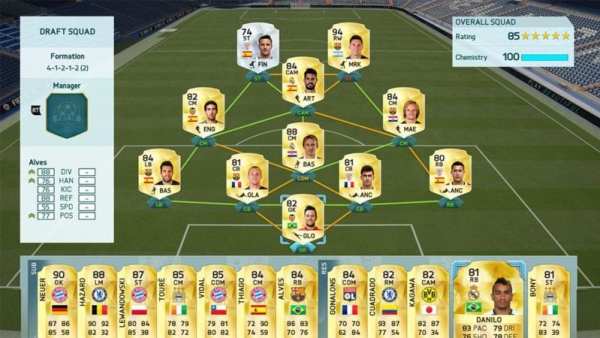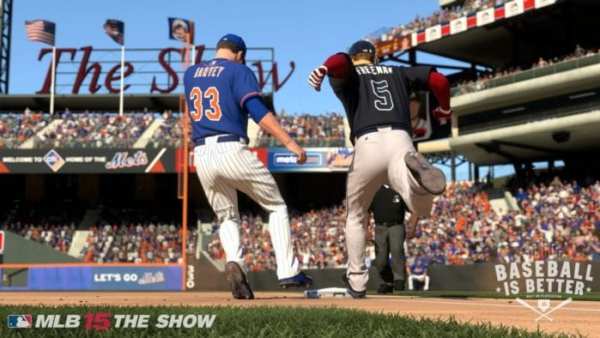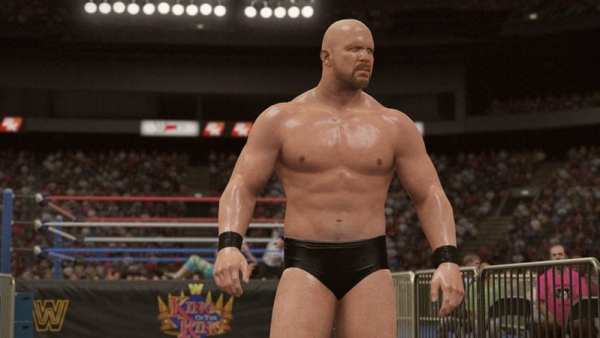The annual sports title has been a staple ever since Madden hit the scene in the late 1980s. Throughout each console generation, almost all major sports titles have adopted the annualized model. There are currently around 10 annualized sports games that release on console every single year.

While the model has been financially lucrative for many companies — most notably for EA Sports and 2k — the model is not free from criticisms. The biggest of which is that year in and year out the consumer feels like they are simply paying for a $60 roster update. Even some of the most successful and critically well-received sports games seem to only marginally improve year-to-year with much of the game being a simple copy-and-paste of the previous years.
Features that would simply be check marks for franchises with longer development cycles, suddenly become “back of the box” features for sports titles. Games tout overhauled lighting, a simple control change, or a single feature being added to an already existing mode as justification for dipping their hand back into the consumer’s pocket. In the most extreme cases — as have been most prolific in the Madden franchise — a game will remove a feature one year only to reintroduce it as a new addition several iterations later. For instance, NBA 2k’s removal of Online Franchise from NBA 2k14 only to reintroduce a watered down version in 2k16.
For some sports gamers, they simply wait several years between purchases to get a sense of the progress that is occurring. Others have an annual desire for the latest rosters and most accurate jerseys and stadiums. They dish out $60 year after year for a game that is only slightly different than the previous years.
There has to be a better way, right? Perhaps it is time for sports game publishers to rethink the way that they release their titles.
Separate Card Games from Other Game Modes

The most lucrative, and arguably most popular, modes in each of the major sports titles are their respective card game modes. EA Sports has Ultimate Team, NBA 2k has MyTeam, and MLB the Show’s equivalent is called Diamond Dynasty.
In these modes, players attempt to build their teams from the ground up by opening packs of cards that can contain athletes, uniforms, stadiums, or other boosts. As they play they can earn credits that can be used to buy individual cards or packs with varying degrees of guaranteed rarity. Not interested in earning the credits by playing the game? Not a problem, real money can be used to purchase the credits needed to buy new cards.
It was recently reported that EA Sports’ three card game modes — Madden Ultimate Team, FIFA Ultimate Team, and Hockey Ultimate Team — generate about $365 million of revenue annually. These are modes the require very little maintenance and very little change to be profitable. Konami’s Pro Evolution Soccer attempted, at least, a part of this model when they launched their myClub mode as a separate FTP mode. EA has also implemented this model on mobile versions of Madden and FIFA.
Sports games have two separate audiences. Those who are interested in the team-building card game modes, and those who are interested in the career modes. By separating out the two modes and making the card game FTP, companies create a low-risk entry point for those unfamiliar with the game, assimilate customers with the card marketplace by freeing up money that would have otherwise been spent on the game itself, and ensures career mode players that they are not paying for game modes they are disinterested in.
Bi-Annual Releases

Good games take a lot of time to make. With that being said, most annualized sports titles are only afforded a nine to ten-month development cycle. Meaning, most sports games are just the previous year’s game rebuilt on the same engine, with the same assets, and minor upgrades made to visuals, AI, and game modes. Rarely does a sports game make a giant leap forward from one year to the next. There simply isn’t enough time.
The only way developers can be given the opportunity to move past the general tweaking that occurs from year to year to an opportunity to go in and blow up particular parts of the game is by migrating away from the annualization model. Placing a year between each title’s release would take the nine-month development cycle and increase it to a 21-month development cycle.
Now, rather than going in and adjusting a few minor features in franchise mode between releases, the developers can decide to completely rebuild the franchise mode with the extra twelve months of development time.
Bi-Annual Releases with Paid Second Year Support

Of course, giving he extra time in development sounds great from a consumer perspective and probably from a developer perspective, as well. However, how can all of this work from a business perspective? Bi-annual releases increase the amount of money being spent on each individual release and effectively halve the total revenue earned over a two year period. That’s a tough sell to the money-minded members of EA, 2k, and other sports game publishers.
The solution would be to pay a small fee for second-year support. Think, season pass or expansion pack. The criticism that sports games are, essentially, $60 roster updates year-to-year already exists. Therefore, slapping a relatively smaller price tag on the following year’s support could be viewed as a discount from having to pay full price for a marginally improved game.
Included in the expansion pack would be updates to stadiums, jerseys, and season schedules as well as access to all scheduled roster updates for the second year. Unfortunately, this would lock out online play for those without the expansion due to the fact players are required to have the latest rosters installed. The only update that would not be tied to the expansion pass would be critical updates that seek to take care of issues within the game itself.
Multiple Development Teams

There is, of course, a natural rhythm to annualized releases that sports gamers have grown accustomed to. Perhaps this rhythm of a new Madden every August or a new NBA 2k every September doesn’t need to be interrupted to get an improved sense of progress from year to year. How can this be possible? Multiple development teams.
The way it works is having games that release annually while being developed by separate studios on a cycle. For example, Activision commissions Treyarch, Infinity Ward, and Sledgehammer to design a new Call of Duty on staggered 3-year cycles. As seen by the revenue generated by EA’s card games, the money quite possibly exists to have multiple studios working on the same skeleton of a game while taking a longer development cycle to flesh out particular features.
In this model, publishers would still get the revenue that they generate from year-to-year while the consumers continue to have a new iteration to look forward to every year.
Platform

The platform model has been adopted by several different popular franchises, most notably Rock Band and Guitar Hero. The idea is that rather than having regularly-schedule new SKUs hit the shelves, there would be a base game that is built upon via updates that are supported by an annual subscription fee.
The logic behind this is that small incremental changes are much more palatable when the customer is not shelling out $60 for a brand new game that seems, for all intents and purposes, the same as the previous years. Having a platform, rather than annualized releases gives a base from which to build, and in the current landscape of gaming, anything is possible via title updates. Everything from AI, game modes, and graphics can be altered via an update.
New features that would have likely been overstated such as updated lighting, changes to a particular game mode, or an adjustment in the opponent AI could instead be steadily rolled out.
In this model, pricing could be flexible. The base game could be a free download that can be played by anyone, with roster updates and other non-critical updates tied to a subscription fee. This would create a low-risk entry point for people who have always wanted to try a sports game but were never willing to shell out the initial investment costs. Another option would be that the cost of the base game covers the first 12-month subscription of whatever year the game is purchased in.
Which model would you prefer? Are you happy with the way that sports games are currently developed and released? Let us know in the comments below!
Check Out More
- Top 10 Best Dark Souls Bosses
- 4 Reasons Why VR Isn’t There Yet
- 10 Best Game Boy Advance Games to Play for Its 15th Anniversary
